Concrete Vs Gravel Shed Foundation
Important Point
Which one is the best choice a gravel shed foundation or a concrete? Which one will be easier to the pocket, i.e., the price will be less? Which will be durable and give higher strength? Do the two types have huge differences in them?
While you will be planning for a new shed these types of all questions and their answers must be sorted before its construction. Pros and cons are present for both types of shed foundation so deeply thinking none of them will be a clear winner.
The best can be chosen according to the situation’s requirements and necessity. For installing purposes gravel shed foundations are quite cheaper and easier to be installed. It helps with the provision of a better drainage facility and will provide the allowance for the movement of the shed when required.
When it comes to strength gravel shed foundations are not too strong enough. While if we consider concrete shed foundation it is permanent in nature and gives good strength. Just like that of home footing and anchor bolts can be provided by you.
When it comes to expense concrete shed foundations are a bit more expensive than gravel and cannot be moved if required. When bolting of machinery is required concrete floors are great they get stained easily. Gravel can be cleaned properly and when required can be easily changed.
Is a foundation even required for your shed this question needs to be answered. If the answer to your question is yes then another question comes what will be the best shed for your foundation according to your needs and situation?
Concrete footing along with anchor bolts is very much required for hurricane-prone areas. While if flexibility is required and movement of the shed is required then gravel is a good option for you.
If there is a requirement for bolting down of equipment or benches then you need concrete. If washing of things is required and more drainage is required then gravel is required.
Then comes the flooring Portable buildings having wooden flooring need gravel for the shed foundation. Without a pre-built floor concrete is the best shed foundation which gives a strong shed.
Gravel Shed Foundation Pros Vs Cons
For getting a wide variety of shed designs gravel foundation is a good option for you. It is the best bet for you if you are going to buy a prefab shed consisting of a wooden floor. They are less costly and simple to be built. In a day the prefab shed can be built.
Pros of Gravel Shed Foundation
- As compared to concrete they are less expensive.
- For medium-sized sheds, they are perfectly suitable.
- The installation process is quite easy and it is great for Do-It-Yourself users.
- For temporary it is best suited as they can be moved easily.
Cons of Gravel Shed Foundation
- Large sheds having huge weight cannot be supported.
- The foundation may settle if the soil is wet.
- Through the gravel, the moisture can easily seep into the gravel.
- In the shed, pests can get into.
- Local codes might require concrete if you are building a permanent shed.
- As the gravel shifts or washes away, it might erode with the passage of time.
Drainage
As compared to concrete a gravel shed foundation will provide much better drainage. As long as a floor drain is not installed a concrete floor will not be able to absorb or drain water.
This floor drain will increase the cost and a lot of extra work is needed to be done to the foundation. For laying of pipe, excavation is required to be done to drain to a curb or drainage area.
For rainwater, gravel is much better. Through the gravel foundation, heavy water will easily run but it requires to run around concrete.
Additional work is to be done since grading is required to be done in order to divert water away and around a concrete just similar to the way in which water is diverted away from a house.
Concrete when gets wet will remain in that state for some amount of time and will dry as fast as that of gravel. Since water stays on concrete for some amount of time, it will rot the wood that touches the concrete. For gravel, this problem is not a big problem as the standing water easily drains away.
Splashing
As soon as water hits gravel a gravel foundation will diffuse it easily. The presence of rough, porous, and uneven surfaces on gravel, will prevent water and other liquids from splashing up and entering the wall.
In place of splashing water will get easily absorbed into the ground. Spilled water will get splashed up against the sides of the shed or interior walls having a concrete base. This might the wood to rot present at the base of your base.
Stains can be caused due to splashing. If someone does garden work and wash pots then he/she will know how much dirt the base of walls might get due to the splashed water.
The presence of a base made of gravel will hugely reduce the problem. However, the benefit can only be received by having the shed floor made of gravel. There will be no benefit if you have got a wooden floor built on a gravel foundation.
Cost
As compared to gravel shed foundation concrete shed foundation is much cheaper. In terms of labor and materials, this is true.
You can save a lot of your money by applying a gravel pad if your local building has no requirement for a concrete foundation.
Options
If you go with gravel shed foundation rather than concrete there will be many options available to you. Unless the concrete is stained or stamped.
While there will be different rocks available in many types of shapes, colors, and sizes that will make a good base. If the gravel foundation is chosen by you as your actual shed floor then try to choose a color that will be bright and looks attractive and the rock must be chosen so that it is easy to walk on it.
If you are building a prefab shed having a wooden floor on a gravel foundation then you must choose the color of the gravel that will look good with your siding and hardscaping.
The movement of the shed option will also be available with the gravel shed foundation. Just simply the shed is to be parted then move the gravel and finally rebuilt the shed. This is possible for concrete but it will be quite harder and much more expensive.
Do It Yourself
You can easily pour in a day a gravel base for an average-sized backyard shed. This process can be a very good DIY weekend project, it will be an added advantage if you have enough room for backing the truck up to the site.
The only hard work will be excavation, for that, a machine can be rented to do the job. It is to be made sure that at least 4 to 6 inches are being excavated if you are building your own gravel shed foundation.
The earth is to be properly compacted before you pour the rocks and in order to prevent the growing of weeds some landscaping felt is to be used. It is to be made sure the ground is level. For building the shed it will be easier.
Strength
Strength is one of the disadvantages of gravel shed foundations. Without the use of some amount of concrete, it will not be possible for you to use any type of anchor bolts or tie-downs.
It will not be possible to bolt down anything to the foundation since it is just loose gravel. For the requirement of a strong base, the only available option is concrete.
Concrete Shed Foundation Pros Vs Cons
If the shed is of a permanent type structure then that will be used in many more things in addition to lawnmowers, a sturdy foundation built out of concrete will be required.
Although the concrete base is costlier than gravel and harder to build than gravel, concrete gives many benefits also along with it.
Pros of Concrete Shed Foundation
- Without any occurrence of shift or crack it will support more weight.
- Has the capability of supporting large sheds including story designs.
- If properly built then a permanent foundation will always last for ages.
- With or without floors suitable for all types of sheds.
- Permanent structures may be required by local building codes.
- It also looks beautiful.
- It is considered a high-end option.
Cons of Concrete Shed Foundation
- Gravel will be a cheaper option than concrete.
- If not installed properly then due to changes in temperature concrete slabs can crack.
- Concrete will get cracks in it if there is a shift in the ground underneath.
- If footing is also included then it will require more excavation.
- Building it is much more difficult.
- In order to prevent flooding drainage will be required.
- Unless a floor drainage is added drainage will be bad.
Regulations
According to local building codes for some varieties of sheds, you will be requiring a concrete foundation or footings. In areas that are prone to high winds, this thing is basically true. Your local building codes are to be checked for finding out.
Concrete foundations of numerous sorts are available in the market to meet several requirements. There might be variations in the requirements on the basis of your building requirements.
If the shed is small then it will require a concrete pier at each corner along with gravel floor. Whereas a large shed will require footings along with concrete slab floors.
Bringing some plans of your shed is highly recommended if you want to get inducted and introduce it to your local building department.
Strength
For larger structures that will require more strength and support, it is previously mentioned concrete shed foundation will be a great choice for it. In addition to the floor, just concrete can be present there for many needs.
For tying the structure to the ground footing can also be installed along with anchors. After that, the grounding of the shed makes it a safer choice in case of a lightning storm.
For bolting down machinery concrete floors are a much better option. Some woodworking equipment is to be kept that will need to be securely anchored to the floor. The equipment will be unusable without concrete.
While working on equipment that will need to be jacked up a concrete base will come in handy. Gravel will not possibly make very sturdy flooring.
Looks
The concrete flooring look is loved by many people. Many modern-styled homes are also giving it a required choice for their building.
They can be given the required color, polishing can be done, can be stamped, textured, or just left bare. This material is very versatile in nature and looks quite good in many home styles.
As compared to gravel concrete floors will give you a much higher-end look. It is intended for permanent use so it is a much more expensive foundation. Concrete foundations are used for custom-built ones whereas gravels are used for pre-fab sheds.
Pests
A seal attained on a shed built on a concrete foundation will be as tight as a house. This will make it very hard for pests to get into the shed from under the walls.
While for gravel this will not be the case. If a shed is being built right on top of a gravel foundation then there will be very little scope to stop the entrance of animals or bugs into it.
Stains & Drainage
Drainage problems and stains are the two problems that are associated with a concrete shed foundation.
Concrete will easily stain and it is very hard to clean. If work is being done inside the concrete shed then that will be very messy you should prefer gravel for that.
A well amount of drainage will not be available. In order to counteract the problem floor drains need to be installed. While this process is expensive and will require a considerable amount of excavation as well as a spot for draining into.
Cost
You also need to consider the high cost of concrete shed foundations. If by installing a pre-fab shed you are trying to save money which you bought at Home Depot then you must choose gravel for the shed foundation.
A lot of your money will be saved as compared to concrete. Whereas, if a large custom shed is being built then surely you must use a concrete shed foundation.
The return on investment must be considered in terms of cost. A value will be added to your home due to the presence of a shed. The foundation option that will suit the shed design you are building must go with that.
Should a Shed Foundation Be Bigger Than the Shed?
A same-sized concrete slab should be used by you as that of the shed if a concrete shed base is being used by you. Whereas a 12” wider gravel base should be made to use on all sides while you are using the gravel foundation for your space.
By providing a 12” lip on a gravel shed foundation will provide you with numerous benefits which are mentioned underneath:
The wood is protected from puddling or splashing water which helps in the prevention of rot. Soil will not be able to splash onto it so the shed will be kept cleaner.
Mowing will become easier as the grass and weeds will be kept away from the shed. By providing more gravels reduction in water runoff will be possible.
What Type of Gravel Is Used for a Shed Foundation?
If your choice is gravel then a rock is to be chosen by you. ¾ inch drainage rock or trap rock is the best choice of gravel for a shed base.
Enough compaction can be possibly done for making the base firm along with allowing drainage of water if the right sized gravel is chosen.
Instead of using just larger and smaller stones a combination of stones can be used by you. It will very importantly depend on the soil type and for how long you will use the shed.
In order to carry heavy loads type of stone which compacts well must be used. If more drainage is needed then you must use jagged stone that will settle more opened spaces. You must compact the gravel properly, no matter what type of stone is being used by you.
Concrete Vs Gravel Shed Foundation. Which Is Best?
It is a very situation-based answer to which one will be the best material for using the shed foundation. For foundations, both concrete and gravel are good in their own respective situations and do different things.
Underneath few situations are provided for deciding which material will be best for you:
If more amount of drainage is required by you inside and around the shed then you must use a gravel shed foundation. In this context, it will be a much better option.
If your plan is to build a large and custom shed then you must go with concrete. Since concrete is much stronger than gravel. For smaller pre-fab sheds gravel sheds are a good option. You will be able to buy them online or at Home Depot.
The shed is made of wood then gravel will be a good option for you. You must use concrete or footings if you are living in a high wind area and it requires strong anchors. Gravel foundations would be a good option for temporary sheds.
How Deep Should a Gravel Base Be for a Shed?
In general, 4” to 6” is a good depth range for a gravel shed foundation.
What Type of Gravel for Shed Base?
A gravel shed foundation is not made up of what you would expect. It is a form of crushed stone talked about as; drainage stone, #57 gravel, washed stone, or clean stone. All of these are going to be referring to the same type of crushed stone, which is the best gravel for shed bases.
Gravel Base for Shed on Slope
This simple approach involves marking your site, digging six inches deep, then levelling off with gravel. Use a large plank of wood to even out the gravel and level your base—it’s the best way to level ground for a shed on a slight slope. Lay your cement once the gravel is set, then install your concrete slabs.
Is Gravel Good for Shed Foundation?
Yes! A gravel shed base is one of the best options when it comes to shed foundations.
How Much Gravel Do I Need for a 10×12 Shed?
A bed of 4″ or more of crushed/screened 3/4 minus gravel or other porous gravel is required for all sheds over 8′ wide. Gravel base is to be 2 feet larger than the shed size. Example: 10×12 shed requires 12×14 base (see diagram below).
What Is the Cheapest Way to Build a Shed Foundation?
Concrete block shed foundations are popular because they are cheap, easy to install, and easy to use for leveling sheds on slopes.
Can I Put a Shed Directly on Grass?
Placing a wooden shed directly on the lawn or grass is not a good idea. Direct exposure to the lawn means constant exposure to moisture, which can cause the foundation to become damp and rot.
What Is the Best Foundation for a Shed?
As mentioned above, gravel shed foundations are one of the best overall shed foundation options. Technically, these foundations are built with crushed stone (usually limestone) and not actual gravel. Gravel shed foundations are versatile, economical, and durable.
What Is the Easiest Base for a Shed?
A gravel pad (crushed stone) with a lumber perimeter is the best shed foundation option in most cases. We recommend gravel shed foundations because they provide a stable base for your shed to rest on and do a great job of draining water away from the bottom of your shed.
What Gravel Is Best for Shed Foundation?
The best type of crushed stone for a gravel shed foundation is ‘¾” clean‘, sometimes also referred to as ‘clean stone’, ‘¾” washed’ or ‘#57’, depending on the supplier.
Can You Put a Shed Straight onto Concrete?
A very common question that we asked her at the Shed Base Company: “Can I install my plastic shed base directly on top of my existing concrete flooring?” To answer simply, yes.
How Big Should a Foundation Be for a Shed?
With a concrete foundation, your shed foundation should not be wider than your building; you will want to make it exactly the same size. As stated before, with a gravel pad, you will want to make your shed foundation 12″ wider than your shed on every side.
Does a 12×16 Shed Need a Foundation?
What Foundation Does A 12×16 Shed Need? Like any portable structure, a 12×16 shed needs a place to be set. There are multiple foundation options available for a 12×16 shed to be placed on. Let’s look at the most common type of shed foundation options.
Does a Shed Base Need to Be Perfectly Level?
Making sure that your shed is level is essential to its durability. Over time, all structures settle, and if your shed isn’t level, it won’t be structurally sound. The floor may start to slant, the door may not hang the way it should, and the structure won’t be sturdy.
Why Put Gravel Under Shed?
A gravel shed foundation acts like a basin that collects rainwater under your shed. This allows the water to soak into the ground instead of running off and causing other possible issues. If you live in an urban area, your township may require you to put in a deeper stone base so that it can hold more water.
Like this post? Share it with your friends!
Suggested Read –
- Footing Vs Pier
- Types of Stair | Stairs Parts Names & Details
- MDF vs Plywood | What Is MDF | What Is Plywood
- What Is SBC of Soil? | Safe Bearing Capacity of Soil
- Is Quikrete as Good as Concrete | Quikrete Vs Traditional Concrete | Why Does Quikrete Set Up So Fast
- What Is a Retaining Wall | Types of Retaining Walls | How Retaining Walls Work | Retaining Wall Detail | Retaining Wall Anchoring Retaining Wall Systems
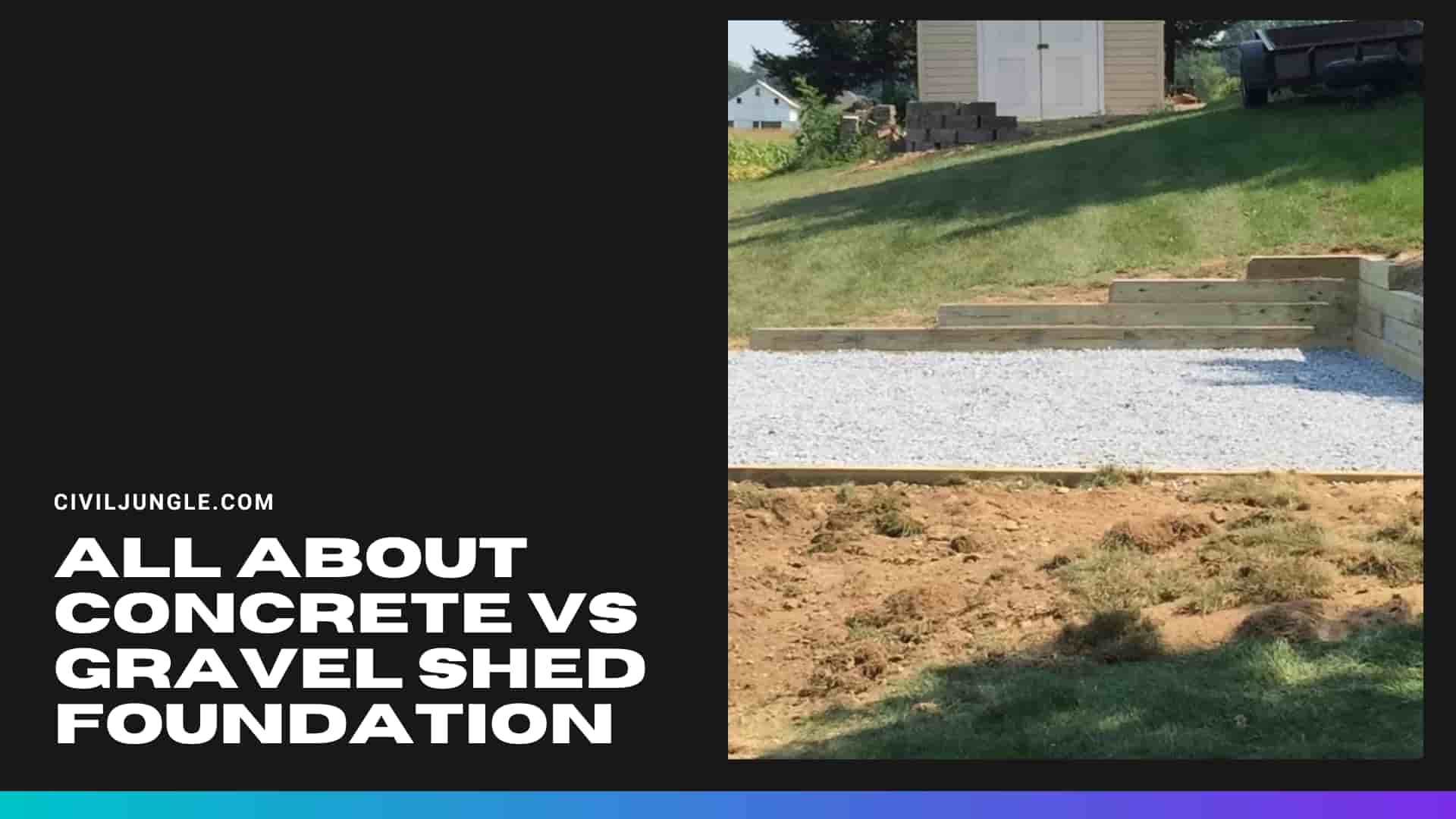

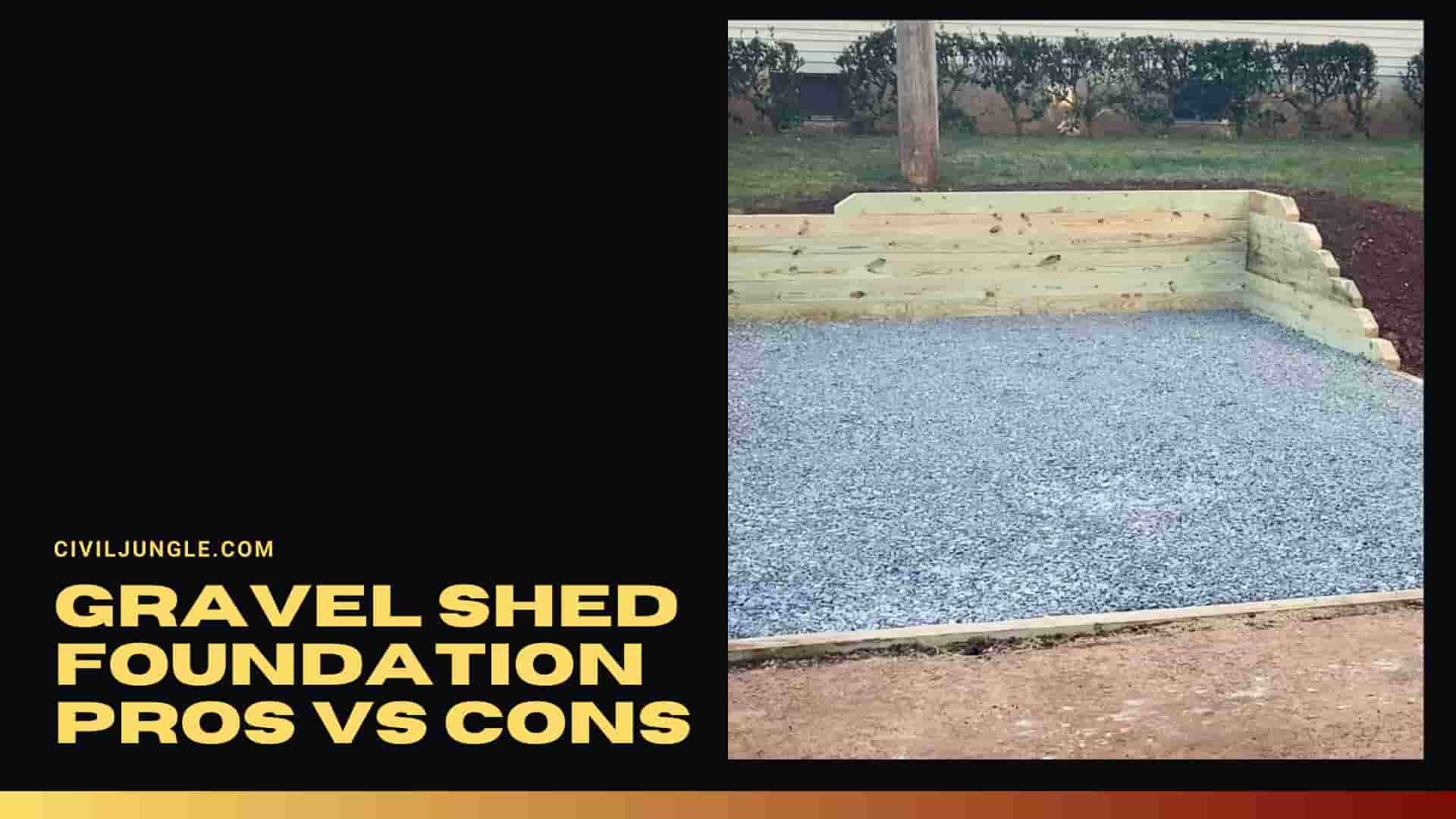
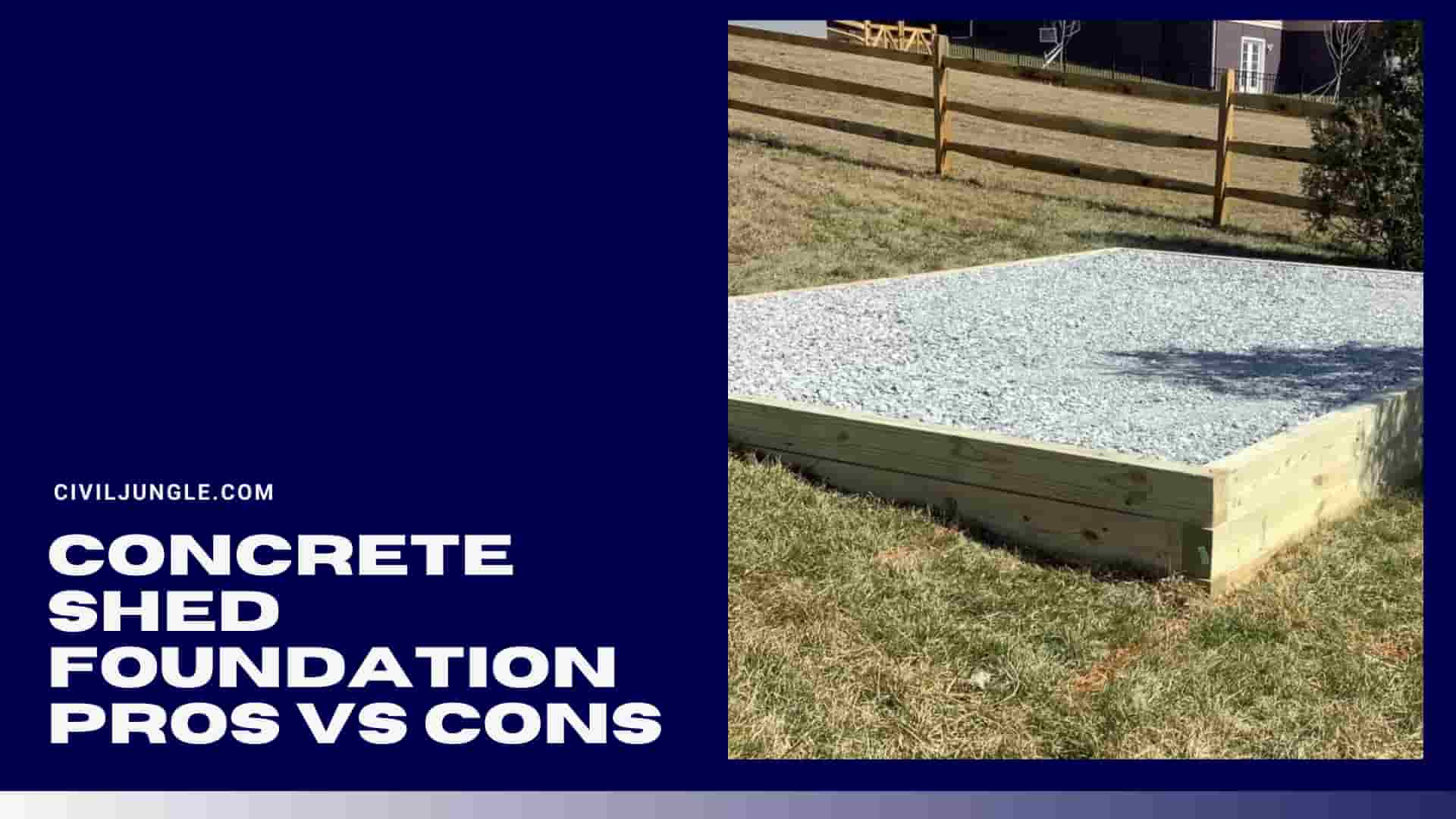
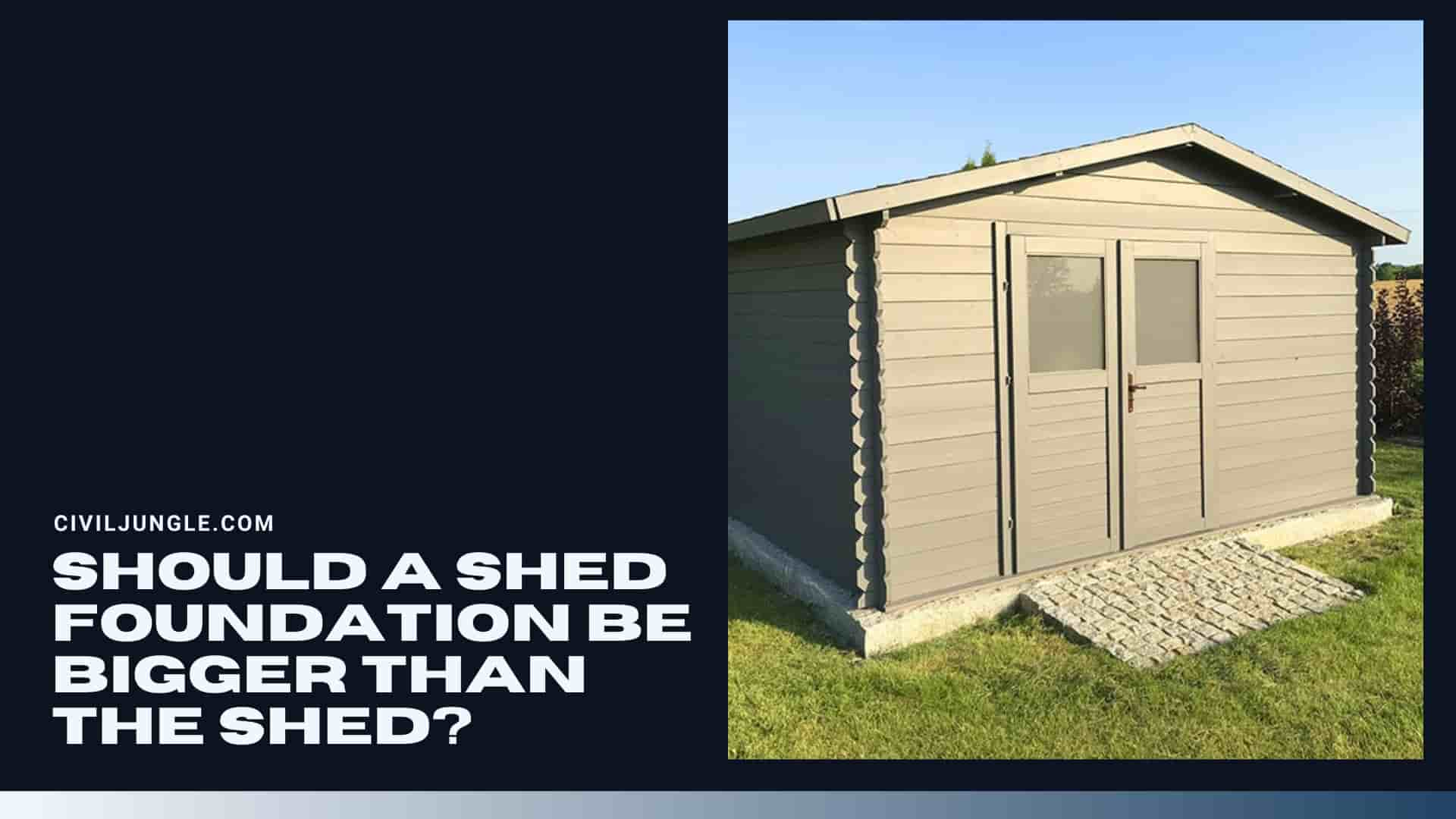
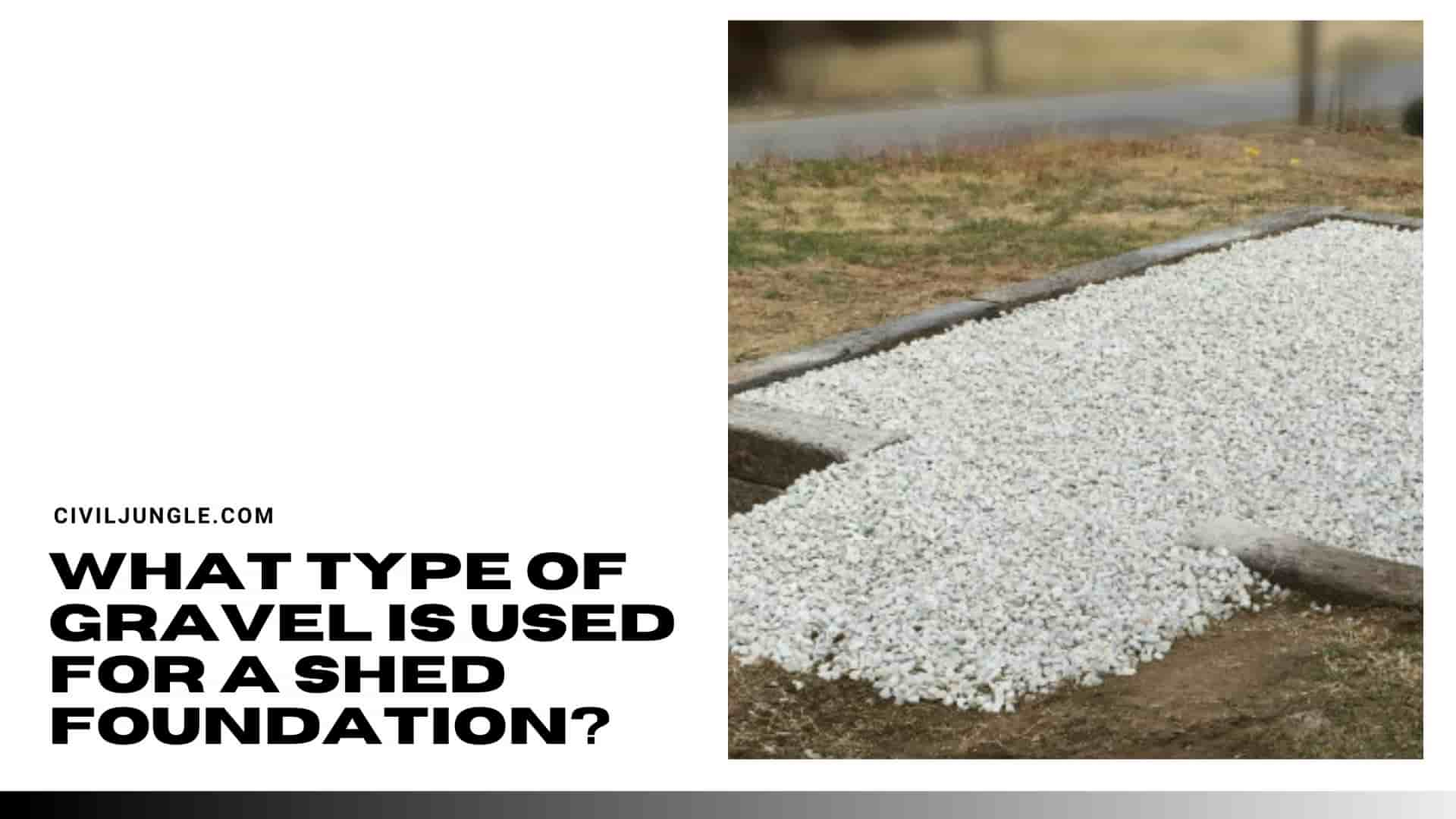
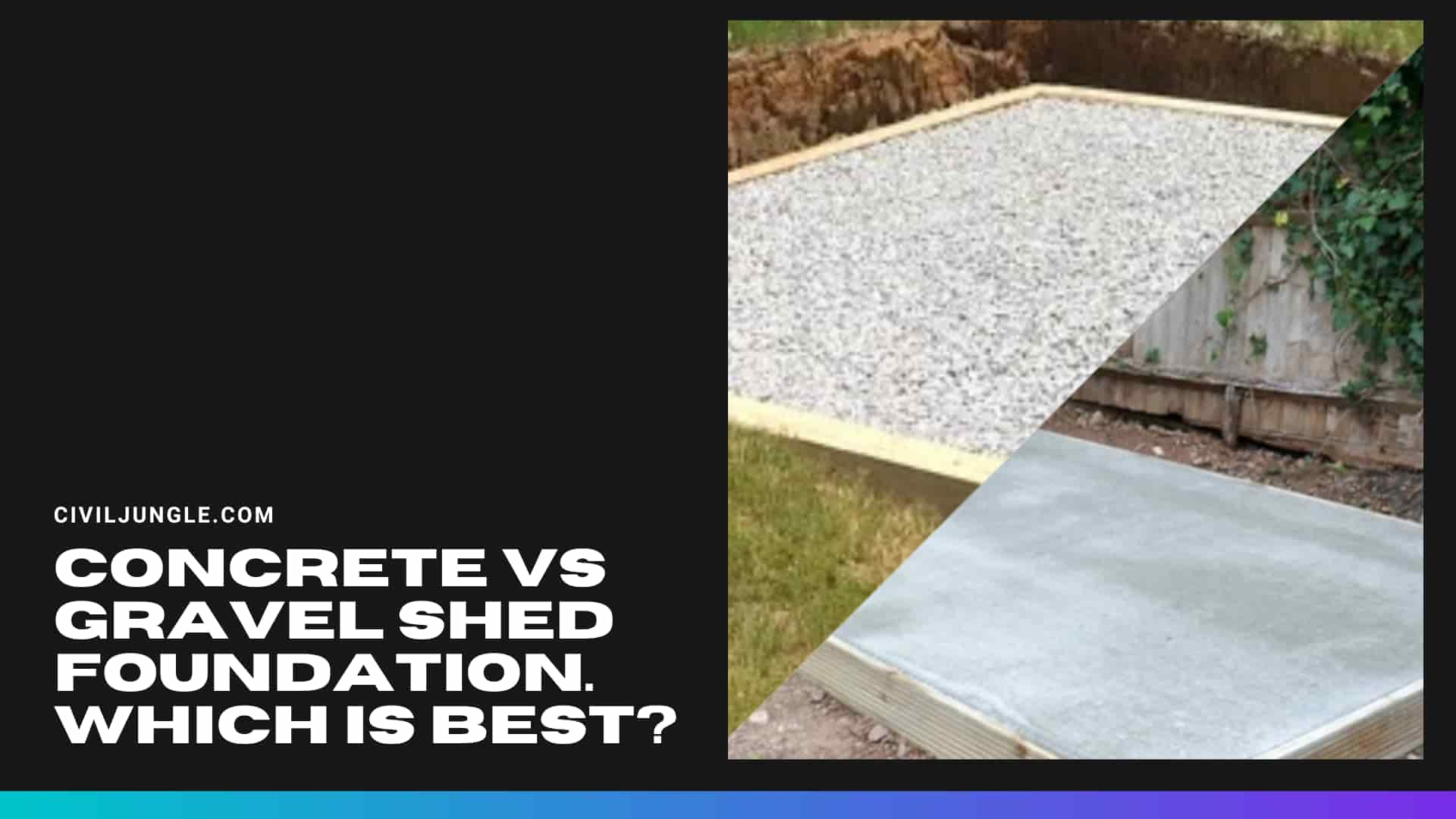

Leave a Reply